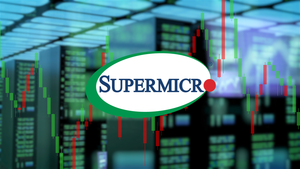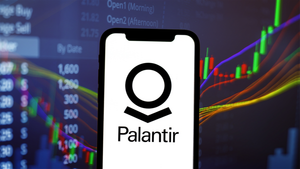
In 2025, a potent cocktail of geopolitical uncertainty, persistent inflationary pressures, and heightened economic volatility has compelled institutional investors to significantly ramp up their use of options as a primary tool for risk management. This strategic pivot is reshaping market dynamics, driving record options trading volumes, and signaling a renewed emphasis on active portfolio management and sophisticated hedging strategies across the global financial landscape. The move reflects a growing recognition that traditional investment approaches alone may be insufficient to navigate the complex and unpredictable forces at play, pushing the derivatives market into an unprecedented era of growth and innovation.
A Calculated Shift: Why Options are the New Frontier for Institutional Hedging
The surge in institutional engagement with options is not a fleeting trend but a calculated response to a multi-faceted risk environment. Global geopolitical tensions, including ongoing trade disputes between major economic powers, military conflicts, and a packed election calendar across 70+ countries, are creating significant market instability. These events threaten to disrupt supply chains, impact cross-border investments, and introduce sudden policy shifts. Concurrently, while some inflation concerns might be moderating, a substantial portion of institutional investors still view inflation as a top portfolio risk, particularly given potential disruptions to energy and food security.
Moreover, economic volatility is anticipated to remain elevated in 2025, with projections indicating a higher Cboe Volatility Index (VIX) than in the previous year. Central bank policies, fluctuating economic indicators, and trade tariffs are key drivers. In this environment, options offer unparalleled flexibility. Strategies such as protective puts are being widely employed to mitigate downside risk, while more complex volatility plays, including straddles and strangles, are used to either profit from or hedge against significant price swings. This heightened activity translates directly into a boom in options trading volume, leading to narrower bid-ask spreads, enhanced liquidity, and more pronounced price movements. Institutional investors are not just passively observing; they are actively diversifying into private markets, maintaining gold as a stabilizer, and demanding sophisticated hedging tools and expertise, signifying a profound shift towards proactive and agile risk management.
The Fortunes of Facilitators: Who Wins and Loses in the Options Boom
The institutional embrace of options has created clear beneficiaries and posed challenges for others across the financial ecosystem, particularly for exchanges, brokers, and asset managers.
Exchanges are among the primary winners, as their revenue models are directly tied to trading activity. Companies like Cboe Global Markets (CBOE) and CME Group (CME) have reported record options volumes. Cboe, for instance, saw its total options volume across its four exchanges reach 3.8 billion contracts in 2024, marking its fifth consecutive record-breaking year. Proprietary index options, such as those on the S&P 500 (SPX) and the Cboe Volatility Index (VIX), have been significant contributors. Exchanges are also innovating, introducing new products like MSCI Index options and "zero-day options" (0DTE) on indices like the S&P 500, providing highly flexible, short-term risk management tools that further boost volumes. Their data and analytics services also see increased demand as institutional strategies become more complex.
Brokers that cater to institutional clients also benefit significantly. Firms like Interactive Brokers (IBKR) are seeing increased commission revenue from large-volume trades and are uniquely positioned due to their advanced trading platforms, algorithmic execution capabilities, and real-time risk management tools. Interactive Brokers' IB SmartRouting℠ and Trader Workstation (TWS) offer sophisticated functionality required by institutional clients. Northern Trust (NTRS), emphasizing expertise and scale, is another beneficiary, as institutional clients require comprehensive support for execution, margin, and collateral optimization. These brokers provide critical pre-trade compliance and real-time market-risk monitoring, essential for managing complex portfolios.
Asset Managers, including giants like BlackRock (BLK) and Neuberger Berman, are increasingly integrating options into their portfolios, viewing them as essential for risk-adjusted returns and income generation. Strategies like covered calls for income and protective puts for downside protection are becoming standard. Neuberger Berman, for example, offers systematic index option strategies to improve portfolio risk efficiency. Companies like MSCI Inc. (MSCI), a leading provider of risk and performance analytics, also benefit as asset managers rely on their tools, such as MSCI Risk Insights, to analyze and manage option-related risks across multi-asset portfolios.
Conversely, potential "losers" include smaller, less technologically advanced brokers that struggle to offer the sophisticated platforms and deep expertise demanded by institutional clients. Traditional "long-only" asset managers who are slow to adopt derivatives for enhanced risk management may find themselves at a disadvantage in a volatile market where traditional diversification alone might be insufficient. While market makers generally thrive on increased volume, they face significant risks in highly volatile markets, where large institutional trades can trigger rapid hedging activities, potentially exposing them to losses if not expertly managed.
Broadening Horizons: Industry Impact and Regulatory Evolution
The surge in institutional options trading is more than just a numbers game; it represents a profound evolution in financial markets with far-reaching industry impacts and regulatory implications. This trend aligns with broader shifts towards increasingly sophisticated and technology-driven financial instruments.
One key aspect is the institutionalization of the customer base, where major players like pension funds, hedge funds, and banks are now dominant forces. Their substantial trading volumes influence pricing, volatility, and liquidity across the market. This intense activity fosters competition, driving brokerage firms to offer extensive expertise, scale, and highly efficient systems for execution and margin management. Financial institutions that fail to adapt to new technologies, such as blockchain and tokenized assets, risk being disrupted, while proactive players like JPMorgan Chase (JPM) are already offering digital funds and token-friendly custody services.
From a regulatory standpoint, the increased complexity and volume necessitate robust oversight. Bodies like the U.S. Securities and Exchange Commission (SEC) and the Commodity Futures Trading Commission (CFTC) are imposing stricter reporting, disclosure, and capital requirements. There's heightened scrutiny on complex derivative products, with calls for clearer risk labeling and improved investor education. Regulators are also enhancing oversight of algorithmic trading and AI systems, requiring stress tests and risk management protocols to prevent technology-driven market disruptions. Position limits on derivatives are used to prevent risk concentration, although exemptions for bona fide hedges exist.
Historically, options trading has evolved significantly. While ancient forms of options existed, the establishment of the Chicago Board Options Exchange (CBOE) in 1973, coupled with the Black-Scholes pricing model, standardized the market, vastly increasing transparency and participation. A pivotal shift in institutional perception occurred after the tech bubble burst in 2000, revealing the critical need for downside protection and cementing options as a vital risk management tool. Lessons from past crises, such as severe losses in exotic derivatives in 2008, continue to inform current regulatory efforts, emphasizing the need for robust risk management and careful scrutiny of complex products to avoid systemic risks from discontinuous payoffs.
The Road Ahead: Navigating the Future of Derivatives
The trajectory of institutional options trading for risk management points towards a future characterized by technological advancement, evolving regulatory frameworks, and continuous adaptation from market participants.
In the short term (1-3 years), expect intensified regulatory scrutiny, with global bodies pushing for greater transparency, stricter capital requirements, and enhanced best execution standards. Institutions will continue to embed AI and machine learning for real-time market monitoring, predictive analytics, and optimizing trading strategies, seeking to identify emerging risks and forecast market movements with greater precision. Exchanges will innovate with new, more granular products, such as Cboe's planned cash-settled futures and options on the "Magnificent 10 Index," offering targeted exposure and risk management tools. Operational efficiency will also be a key focus, with institutions streamlining processes for margin and collateral management.
Longer term (beyond 3 years), the landscape could be reshaped by the ubiquitous integration of Distributed Ledger Technology (DLT) and tokenization. Blockchain technology promises faster processing, increased transparency, lower costs, and significantly reduced settlement times, potentially transforming how options and their underlying assets are traded. Advanced AI-driven risk management will move beyond predictions to autonomous trading and hedging strategies, leading to highly adaptive frameworks. There will also likely be a push for harmonized global regulatory frameworks to manage the complexities of AI model risk and DLT across jurisdictions. Expansion into new asset classes and geographies, including new forms of digital assets and esoteric instruments in emerging markets, is also anticipated.
Strategic pivots for market participants will involve significant investment in AI/ML infrastructure, DLT platforms, and specialized talent. Enhanced data management and analytics will be crucial, along with adaptive compliance and governance frameworks. Establishing strategic brokerage relationships and continuous talent development will be vital. While emerging markets offer opportunities for diversification and growth, they also present challenges related to liquidity, political risks, and currency fluctuations, necessitating specialized options strategies. The most likely scenario is one of tech-driven efficiency and precision, leading to a more stable, transparent, and resilient financial system. However, potential scenarios also include heightened regulatory oversight and market fragmentation, increased competition from market democratization, and even systemic risks from AI/DLT malfunctions, underscoring the need for robust validation and human oversight.
A New Era of Risk Management: Lasting Impact and Investor Vigilance
The institutional embrace of options for risk management marks not merely a passing trend but a profound and lasting transformation in financial markets. This shift underscores a permanent evolution in portfolio management, moving beyond traditional long-only strategies to a more dynamic and nuanced approach to controlling risk and enhancing returns.
Key takeaways include the primary purpose of options as a risk mitigation tool, the diverse array of sophisticated strategies employed by institutions (from protective puts to meticulous position sizing), and their significant influence on market dynamics, liquidity, and stability. The understanding that options are powerful tools for comprehensive portfolio management, capable of both reducing risk and enhancing profit potential, has firmly taken root. This paradigm shift emphasizes disciplined leverage management and capital protection as core tenets for navigating volatility.
Looking forward, the market is poised for continued growth and innovation, driven by technological advancements and a supportive, albeit evolving, regulatory environment. New derivative products, the expansion of short-dated options (0DTE), and ongoing technological innovations in risk analysis will continue to shape trading behavior. The strategic role of alternative investments, including options-based strategies, within pension funds and endowments further solidifies this trend.
The lasting impact is clear: options have revolutionized risk management paradigms, fostering greater market stability by increasing liquidity and offering sophisticated hedging mechanisms. This institutional embrace signifies an enduring shift in investment philosophy, enabling a more adaptive and resilient financial system.
For investors in the coming months, vigilance is paramount. Watch closely for new derivative product introductions, especially those around thematic indices, and the continued expansion of 0DTE options, understanding their implications for both tactical hedging and potential volatility. Stay informed about regulatory updates that could impact derivatives trading, and observe how new technologies continue to simplify and enhance real-time risk analysis. Finally, pay close attention to macroeconomic trends and volatility indicators, as these factors often drive institutional hedging activity and strategic shifts, providing invaluable clues for navigating an ever-evolving global financial landscape. The era of sophisticated, technology-driven risk management through options is here to stay, demanding continuous learning and adaptation from all market participants.





